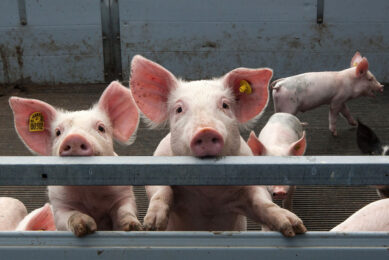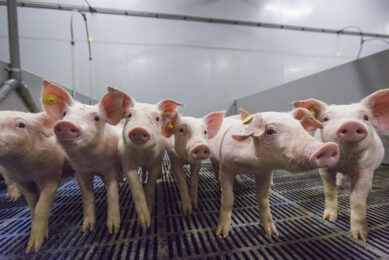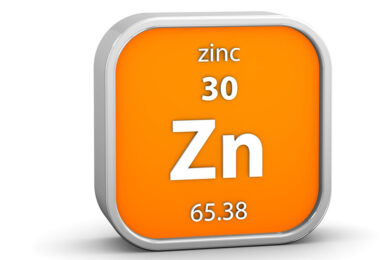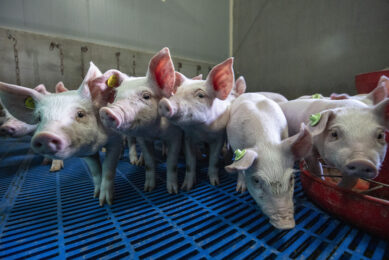Replacing zinc with soy protein?
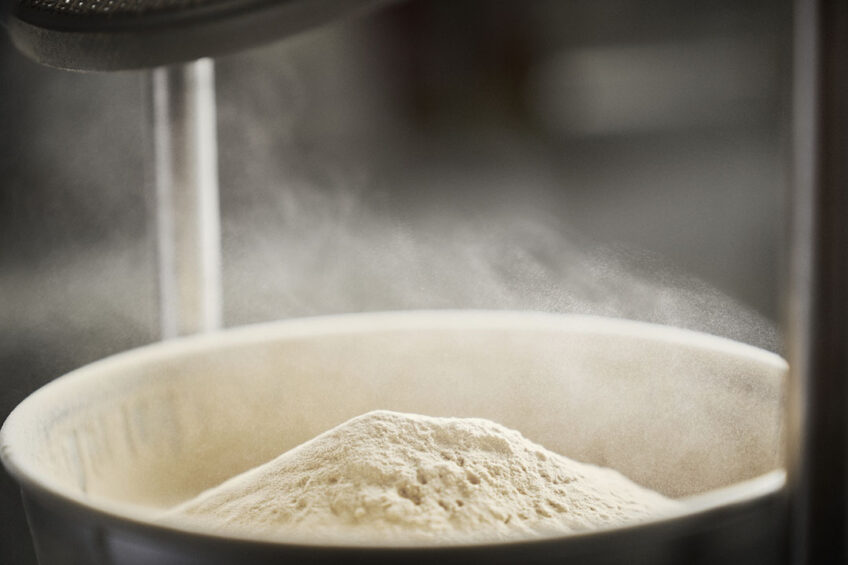
How a specialised concentrated protein product is expanding into new markets.
Soybean meal continues to be a top feed ingredient across many livestock species, and effective methods that extract the protein and also remove anti-nutritional factors are of critical interest to the industry.
One innovative extraction process was developed in the 2000’s by Dr Keld Ejdrup Markedal, Dr Jens C. Sørensen and Dr Hilmer Sørensen at the University of Copenhagen. For decades, they had conducted research on protein extraction, separation technologies and optimisation of process control in pilot as well as full-scale trials.
Protein extraction – legumes
The research team has several patents on protein extraction, with one for legumes being submitted in 2011. It involves the innovative use of water and other processing aspects to flush out the anti-nutritional factors. This results in a very high-quality concentrated protein that offers high levels of digestibility (97% in piglets), improved nutrient absorption, and increased feed conversion rates. It is ideal for young piglets with sensitive digestive tracts and high vulnerability to health issues.
For now we are only using it for soybean, but it could be relevant for other legumes such as pea, lupin and faba beans
Hans Jørn Holm, Global Sales Manager, TripleA
Brought to market
The process for legumes was brought to market by a Denmark-based firm named TripleA, founded in 2012, explains Global Sales Manager Hans Jørn Holm. ”It took about 8 years before the we had the process fully developed and could produce commercial quantities of our flagship product AX3,” he says. “For now we are only using it for soybean, but it could be relevant for other legumes such as pea, lupin and faba beans.”
TripleA sells more than 10,000 tonnes of AX3 per year in Denmark and other countries such as Spain, Canada, the UK, Taiwan and China. A primary focus is weaning piglets, but it is also used for broilers and various other species from fish to mink. “We are expanding our geographical sales area each year and we are always interested in new partnerships,” says Holm.
Partnerships
One of those major partnerships is with a company called Protekta, which has roots in Denmark and operations in the USA and Canada. Owned by Lasse Jakobsen and his family, Protekta works with European and other international partners to distribute novel feed ingredients. Under its agreement with TripleA, Protekta has the rights to use TripleA’s extraction process in North America under Protekta’s subsidiary (and brand name) Satavie.
Soy Innovation Challenge
Indeed, Satavie just won the Soy Innovation Challenge, a US-based competition held in partnership by United Soybean Board and The Yield Lab Institute. It calls on academics and private industry entrepreneurs to present new ways to advance the use of (and therefore demand for) soybean meal in agriculture, biofuels or other sectors. Each finalist received a cash prize, mentoring and resources to help advance their ideas. The United Soybean Board aims to achieve maximum value for US soybean farmers, and The Yield Lab Institute is a non-profit, agtech think tank focused on supporting startups and entrepreneur ecosystems around the world.
As the grand prize winner, Satavie received US$100,000 in cash and US$5,000 in in-kind technical services/credits from Amazon Web Services. The money and services will be used to scale up the company, verify the product in the US market and build a US customer base. “We need an appropriate volume of customers and also investors to replicate the TripleA process in North America,” explains Satavie President Lasse Jakobsen.
Benefits in young animals
In terms of validating the product, TripleA continues to work closely with researchers at Schothorst, Testgrisen and University of Guelph (in Canada) on new studies. Jakobsen reports that US-based aquafeed tests are being explored. “Recently we have been having discussions with larger producers of salmon and trout to run trials,” he says. “We’ve conducted one to date, but the trial was not isolated for our product. We expect that based on the highest digestibility levels of our product, feed conversion will be high.”
However, the benefits of its AX3 in young piglets and broiler chicks is already well-established by many studies conducted by scientists at European and Chinese research institutions, University of Guelph, University of Illinois, Kansas State University Groupe Cérès, Quebec Pig Producers and Perdue Foods.
There are several aspects involved in how the product works in place of zinc
Satavie President Lasse Jakobsen
Impact on piglets
To give an overview in relation to piglets, Holm explains that “by using the product it is possible for farmers to maintain a high level of crude protein in the early weaner diet even without ZnO. It is generally given during the first 2 ‘nursery’ stages at a 10% and 8% inclusion rate, respectively. The high viscosity (water-binding capacity) keeps the feed longer in the stomach, resulting in higher digestibility of the whole feed. This in turn reduces the risk of diarrhoea. Mortality is typically reduced and the piglets are more uniform. As adults, these pigs have excellent meat quality characteristics.”
In one study, published by researchers at Kansas State University in 2022 involving over 2200 piglets, AX3 was fed from day 0 to 21 and day 21 to 42 as a replacement for other sources of protein. It was found to provide better growth performance than poultry meal. Those piglets receiving AX3 had increased average daily gain and average daily feed intake compared to those fed the control diet. Replacing poultry meal, fermented soybean meal and spray-dried blood plasma with AX3 improved feed efficiency from day 0 to 21.
Replacement for zinc
The way the product reduces diarrhoea and promotes gut health in piglets is a very exciting factor for producers in countries where zinc growth promoters are being phased out.
“There are several aspects involved in how the product works in place of zinc,” says Jakobsen. “In simple terms, zinc protects young animals from diarrhoea as it is detrimental to bacteria such as E coli. However, this results in a high pH in the feed that has to be counteracted by adding organic acids. Too much zinc is going into the environment from pig farms, and in addition, zinc increases antibiotic resistance in the gut bacteria. These are serious issues, and, with only a small quantity of our product, producers can achieve effective protection against diarrhoea and promotion of good gut health while removing high levels of zinc from the diet.”
On this front, some of the same Kansas State University researchers, with others at an organisation called New Fashion Pork in Minnesota, published a study in 2022 involving over 1000 piglets. They found that the 2 low ‘acid-binding capacity’ diets (containing 13.0 and 10.75% AX3) improved growth performance, reduced the instance of removals and mortalities and improved the economics in nursery pigs when ZnO was not present in the diet.




